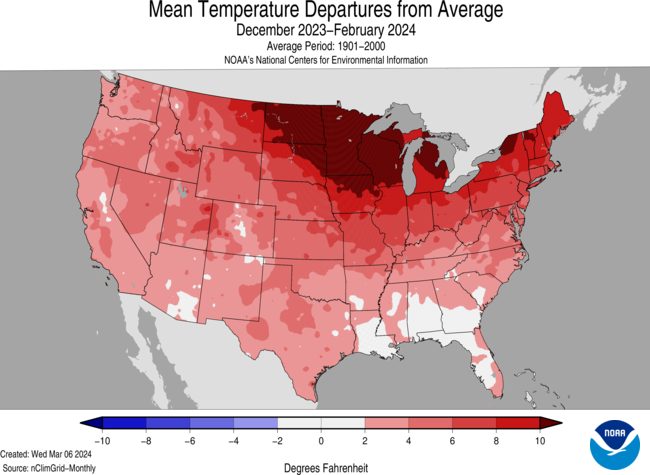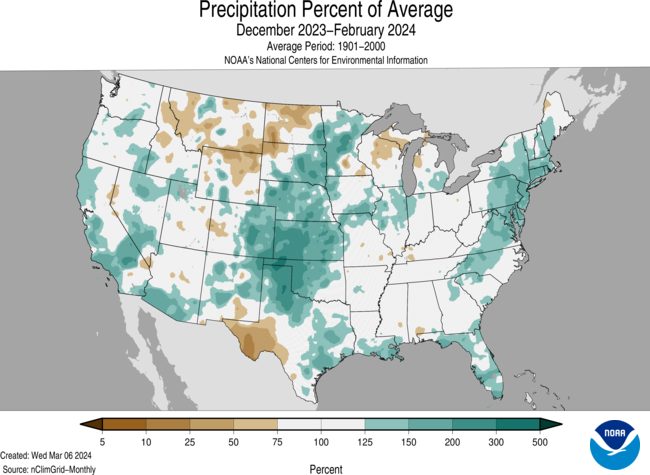
According to the National Oceanic and Atmospheric Administration (NOAA), this last season’s meteorological winter (December 2023 – February 2024) was the warmest ever recorded. NOAA uses National Weather Service (NWS) data, which has been keeping records since the mid to late 1800s.
The average temperature was 37.6 degrees F — 5.4 degrees above average. The Midwest and the East Coast saw the worst of it with Iowa, Michigan, Minnesota, New Hampshire, New York, North Dakota, Vermont, and Wisconsin having their warmest winter on record. Twenty-six additional states saw their top-10 warmest winters on record.
This winter was also wetter than normal with total winter precipitation of 7.71 inches, or 0.92 of an inch above average. This ranked it in the wettest third of all meteorological winters. Connecticut and Delaware both had their third-wettest winter season on record.

Notable Climate Events and Anomalies
- Over 119 inches of snow fell in Anchorage, Alaska, since October making it the second snowiest water year ever in Anchorage.
- A series of atmospheric rivers brought heavy rain and snow to the Western U.S. during February, causing significant flooding, powerful winds, landslides, and power outages in parts of California. The city of Los Angeles received more than 12 inches of rain during February alone which was approximately three times the February average, resulting in the wettest February in decades for the city.
- February 2024 was the third-warmest February on record for the nation and precipitation ranked in the driest third of the historical record for the month.
- The Smokehouse Creek wildfire burned more than a million acres in the Texas Panhandle and western Oklahoma. The wildfire began on February 26 and has become the largest wildfire in Texas history.
- Persistent warmth, with monthly temperature nearly 20°F above normal for the month, resulted in a steady decrease in ice coverage across the Great Lakes, which reached a historical low of 2.7% on February 11—the lowest ice coverage on record during mid February.
- Unseasonably warm temperatures mixed with a vigorous cold front to fuel powerful storms in portions of the Upper Midwest that spawned tornadoes in Iowa and Illinois. Wisconsin had its first February tornado on record—an EF-2 near Evansville, Wisconsin.
There were still areas that saw plenty of quality snowfall and for some ski areas, it was even an above-average year. However, NOAA is looking at the long-term change in climate overall for the continental U.S. rather than the weather in a certain area or season. We appear to be witnessing seasons change and rising temperatures right before our eyes, ultimately affecting communities and ecosystems all across the globe.